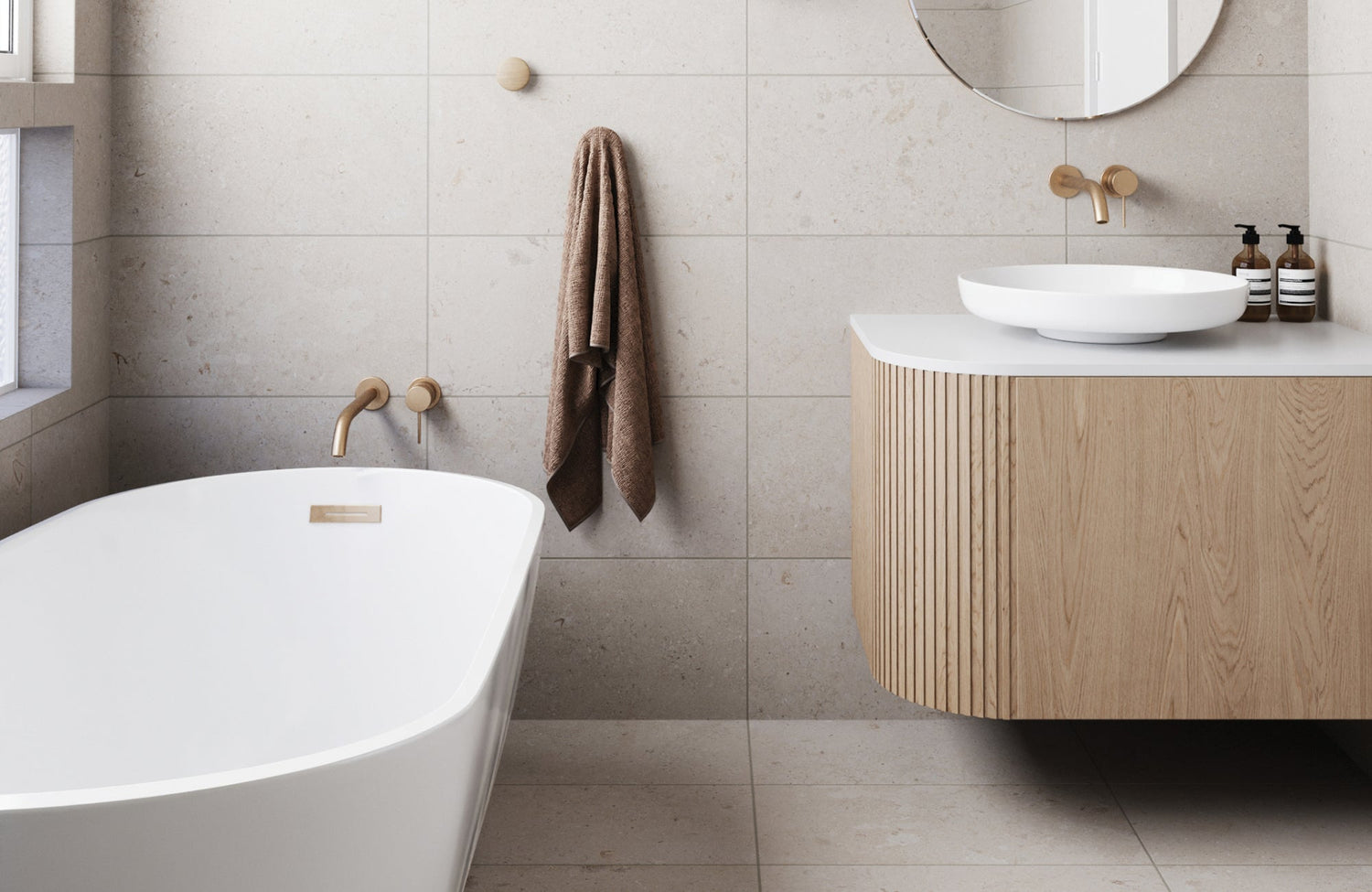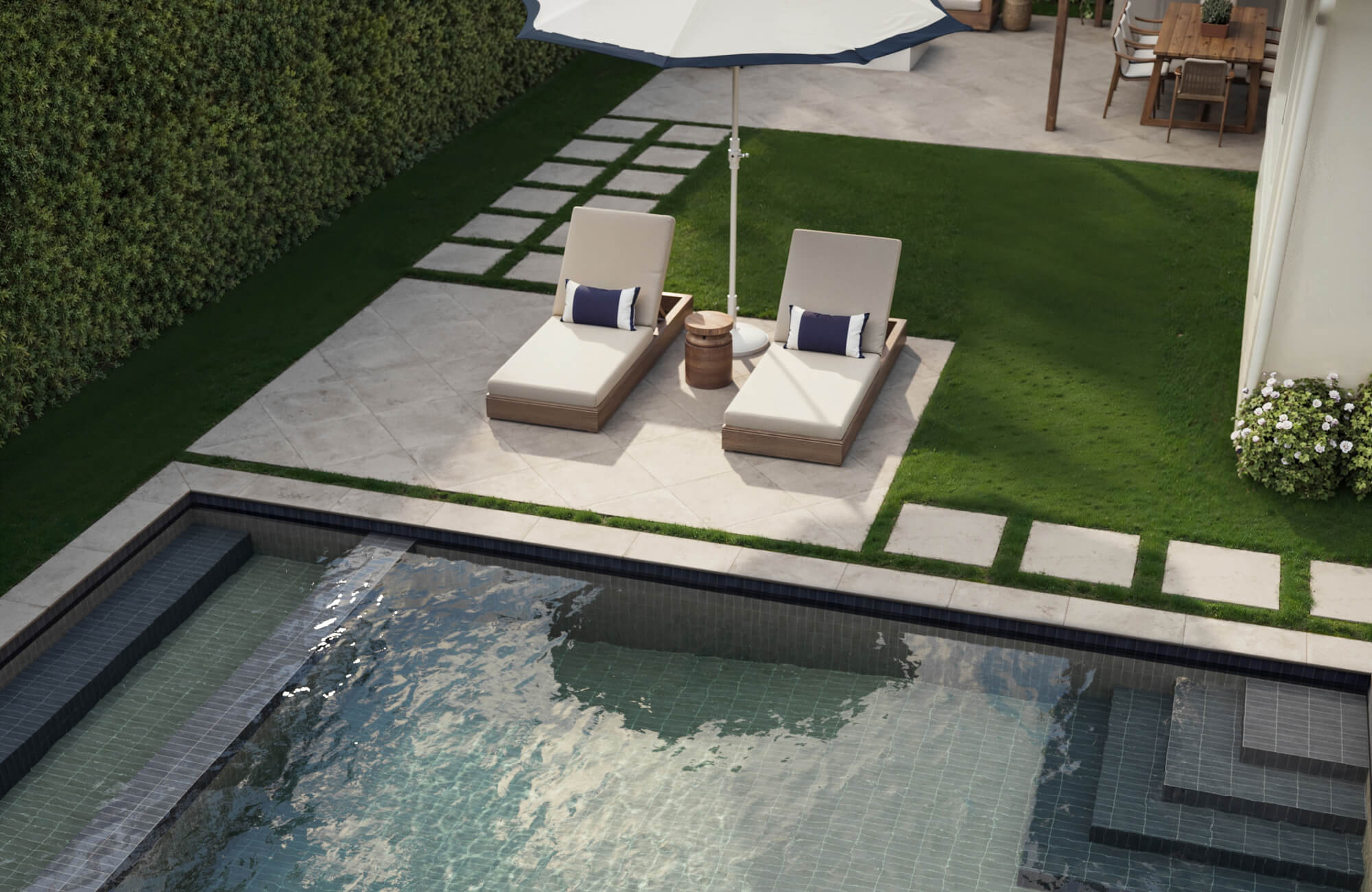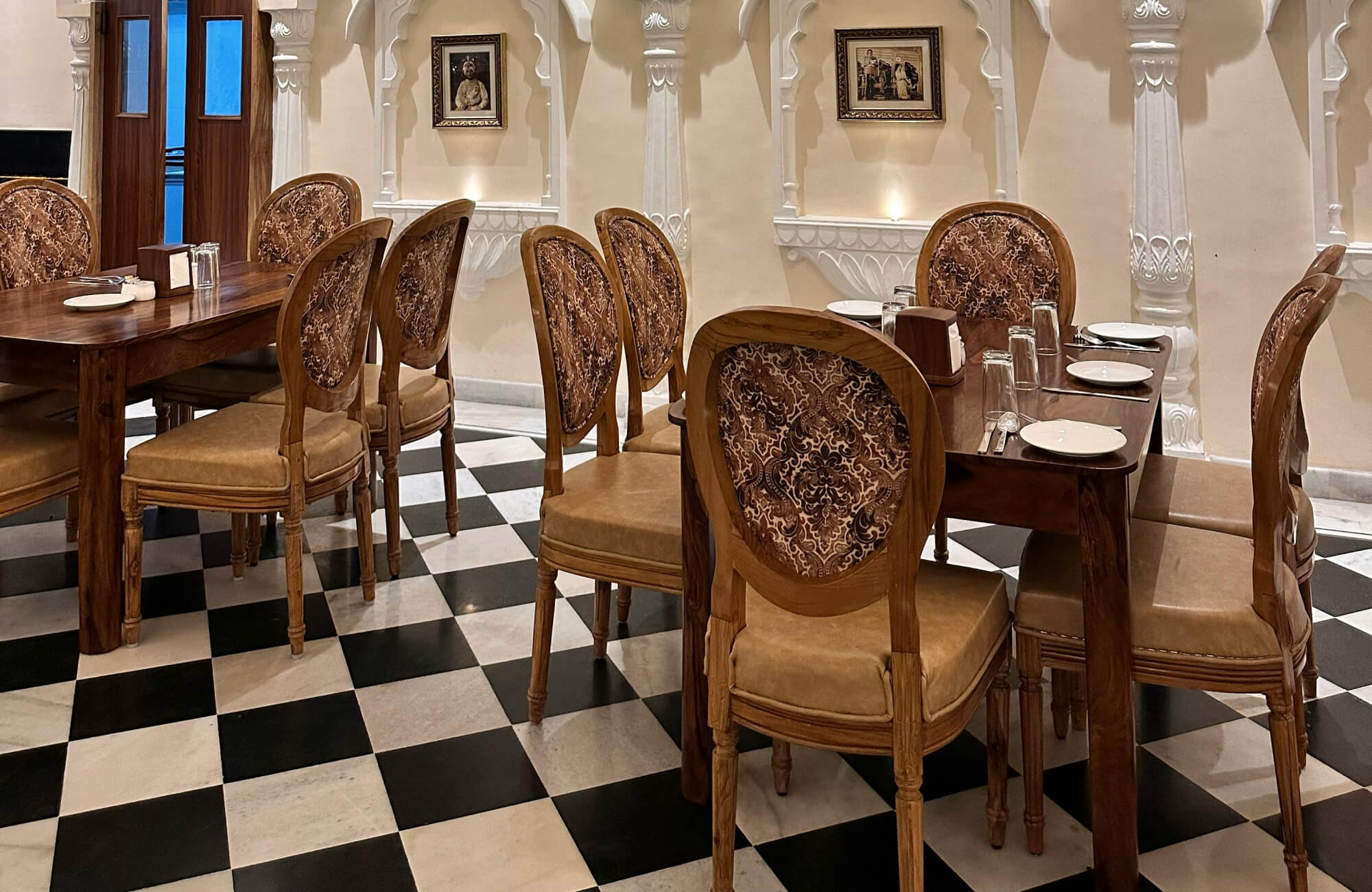When you're planning a bathroom refresh, one of the first details that comes to mind is tile size. It’s something that might seem simple at first, but it can completely shape the feel of the space. Large bathroom tiles, in particular, tend to raise more questions. Do they still work in today’s designs? Are they the right fit for your layout and style? In this article, we’ll guide you through everything you need to know to help you make a well-informed and confident choice for your space.

How Tile Sizes Have Evolved
Style preferences naturally change over time, and the shift from tiny mosaic tiles to today’s oversized formats reflects broader changes in design, lifestyle, and everyday practicality. Let’s take a closer look at the key moments that shaped this evolution and why large format tiles have become a standout choice in modern bathroom design.
The Shift from Small to Large
In the 1960s and ’70s, smaller tiles, like the classic 4x4-inch square, were a staple in residential bathrooms. They were practical, easy to handle, and matched the clean, grid-like layouts popular at the time. However, as design preferences shifted toward more modern aesthetics, larger bathroom tiles began to attract greater attention. Homeowners and designers alike began leaning toward a look that felt smoother and more cohesive. Over time, this growing preference gave rise to a clear trend: a shift away from visual fragmentation and toward a sense of openness and flow, qualities that large format bathroom tiles naturally provide.
Influences from Architecture and Interior Design
The rise of open-concept layouts, soaring ceilings, and minimalist interiors also plays a big role in the growing demand for larger tiles. These tiles naturally complement the clean, uninterrupted lines that define modern architecture. When you bring them into a bathroom, you can carry that same sense of flow and clarity into a space that’s both private and personal. As a result, choosing large format tiles feels not only current but also intentional, enhancing the overall mood and sophistication of the room.
Take Edward Martin’s Leona 24x24 Matte Porcelain Tile in Amani Grey, for example, as displayed in the photo above. Its soft veining and smooth, matte finish create a seamless foundation that quietly supports the room’s airy, modern aesthetic. Paired with minimalist fixtures and warm wood accents, this tile helps achieve the kind of refined balance that today’s architecture calls for: clean yet inviting, simple yet layered.
How Flooring Technology Helped
The move toward large bathroom tiles wasn’t driven by style alone; it also relied on key advancements behind the scenes. Advances in tile manufacturing, from more precise cutting methods to stronger, longer-lasting glazing, made it possible to produce larger tiles that are both stable and visually appealing. At the same time, improvements in adhesives and self-leveling compounds have made installation smoother and more reliable, minimizing the chance of uneven surfaces. Together, these innovations have turned large format bathroom tiles into not just a stylish option, but a practical and technically sound one as well.

The Visual Impact of Large Tiles
When it comes to shaping the atmosphere of your bathroom, tile size also plays a surprisingly influential role. Large bathroom tiles do more than simply cover surfaces; they redefine the space around them. We'll take a closer look at how oversized tiles influence visual flow, set the tone, and help you achieve the look and feel you have in mind.
Making a Small Space Look Bigger
It might seem counterintuitive, but small bathrooms are one of the best places to showcase large tiles. Because they have fewer grout lines breaking up the surface, large tiles can create the illusion of a more expansive, open area. Your eye glides smoothly across the floor or walls, uninterrupted by the grid pattern that smaller tiles often create. This subtle visual trick can also make a compact room feel lighter, less crowded, and far more breathable; perfect if you're looking to maximize every inch without changing the layout.
Creating a Spa-Like Ambience
Another reason large tiles remain a favorite is their ability to evoke the soothing atmosphere of a luxury spa. Their broad, uninterrupted surfaces softly reflect both natural and ambient light, creating a calm, serene environment. This clean, uncluttered look makes it easier for your mind to relax the moment you step in. So if your goal is to turn your bathroom into a personal retreat, somewhere to unwind at the end of the day, large tiles can also help establish that tranquil, high-end feel.
A perfect example is Edward Martin’s Leona 24x24 Matte Porcelain Tile in Marfil, as displayed in the photo above, which is used to enhance the room’s spa-like vibe. The warm, creamy tone and soft matte finish create a gentle backdrop that invites calm while complementing the natural light pouring in. Its large scale also helps minimize grout lines, which adds to the smooth, uninterrupted flow that defines relaxing, high-end bathroom spaces.
Drawing the Eye with Seamless Flow
One of the most striking visual effects of large tiles is how they guide the eye across the room without interruption. Unlike smaller tiles that break up the surface with frequent grout lines, large format options can create long, continuous sightlines that stretch from one end of the bathroom to the other. This visual flow not only enhances the feeling of spaciousness but also adds a clean, architectural rhythm to the space.
When walls and floors appear uninterrupted, the entire bathroom feels more composed and intentional. It’s a subtle shift, but it makes a big impact; your eye isn’t stopping and starting; it’s gliding. This is especially powerful in modern designs, where clarity and continuity are key to achieving that elevated, designer finish.
Practical Pros and Cons You Should Know
Style matters, but performance plays an equally important role. Large bathroom tiles come with distinct functional qualities that can either simplify your daily routine or require a bit more planning. Here, we’ll walk through the benefits and potential challenges, helping you decide whether they’re the right fit for how you use your space.
Easier Cleaning with Fewer Grout Lines
One of the most practical advantages of using large format bathroom tiles is how much they reduce the number of grout lines. Fewer seams mean fewer places for mold, mildew, or soap buildup to collect, making regular cleaning quicker and less of a chore. Pair them with a high-quality, stain-resistant grout, and keeping your bathroom looking fresh becomes even easier. Just keep in mind that it’s always best to follow the manufacturer’s recommendations for both the tiles and the grout to ensure long-term performance and proper care.
Installation Can Be Tricky
Installing large format bathroom tiles comes with a few more considerations than working with standard sizes. Because these tiles span a wider surface area, they need a perfectly level subfloor; otherwise, even slight unevenness can cause lippage, where one edge sits higher than the next. Their added weight also means they’re more challenging to handle and adjust once laid. That’s why it’s strongly recommended to hire a professional installer who’s familiar with large format bathroom tile techniques. Though it does involve a bit more planning and investment upfront, the result is a clean, seamless finish that not only looks better but lasts longer.
Repairs and Replacements Are Less Convenient
Although large tiles are durable, damage can still happen, and when it does, it tends to be more noticeable. A single crack affects a much larger surface area than it would with smaller tiles, and replacement usually involves removing a full section rather than just one small piece. That’s why it’s smart to order extra tiles from the same production batch and keep them stored safely. Tile colors and finishes can vary slightly between runs, so having spares on hand also ensures a perfect match if a repair is ever needed.

Where Large Tiles Work Best in the Bathroom
Not every surface in the bathroom benefits equally from large tiles, so knowing where they have the most impact can help you make smarter design choices. Let’s take a closer look at the areas where large format tiles truly stand out and deliver the best results.
Shower Walls and Wet Zones
Shower walls are ideal for large format tiles. With fewer seams to worry about, there’s less opportunity for moisture to sneak behind the surface, making them a smart, low-maintenance choice for wet areas. But their value doesn’t stop at function. Large tiles also create a smooth, uninterrupted backdrop that instantly elevates the look of the shower, turning it into more than just a practical space.
Edward Martin’s Astrid 24x48 Polished Porcelain Tile in Alabaster, as featured in the photo above, perfectly illustrates how large format tiles can elevate a shower space. Its elegant veining and glossy finish create a seamless, luxurious surface that enhances the sense of openness. At the same time, the reduced grout lines contribute to a clean, low-maintenance design, striking the ideal balance between beauty and practicality.
Bathroom Floors
Flooring is one of the areas where large tiles truly stand out. When installed correctly, they can create a smooth, continuous surface that visually expands the room, making it feel more open and cohesive. This kind of flow also works well in modern or minimalist bathrooms, where the goal is often to keep finishes subtle yet sophisticated. Additionally, since most large format tiles are made from durable porcelain or ceramic, you can get the added benefit of strength and longevity. With the right textured finish, they can provide reliable slip resistance, ideal for a space that sees daily moisture.
Accent Walls
Accent walls offer the perfect opportunity to introduce a bold design element without overwhelming the entire room. Using oversized tiles behind a freestanding tub or a double vanity, for example, can instantly create a striking focal point that elevates the space. This is where you can experiment with expressive veining, unique patterns, or even metallic finishes to bring in character and visual depth. Just make sure the wall you highlight naturally draws the eye; this ensures the feature feels purposeful and well-integrated into the overall design.

Trends in Tile Design and Material
Choosing a tile isn’t just about size; it’s about material, texture, and how each element reflects your style, too. From realistic stone looks to evolving finishes and subtle color palettes, large format bathroom tiles are keeping pace with modern design trends. Exploring these options can also help you find a combination that feels both timeless and uniquely yours.
Marble-Look and Stone Textures
Natural stone brings undeniable elegance to a bathroom, but it also comes with added responsibility. Because materials like marble, onyx, limestone, and travertine are porous, they can absorb moisture and require regular sealing to stay in top shape. In contrast, ceramic and porcelain tiles are non-porous, making them far more resistant to heat, moisture, and everyday wear, without compromising on style.
That’s where large format porcelain tiles with realistic stone textures truly shine. They offer the rich veining and nuanced depth of natural stone, but with far less maintenance. A great example is Edward Martin’s Aniston 24x48 Matte Porcelain Tile in Calacatta Quarzite, as displayed in the photo above. It captures the timeless beauty of marble while providing the strength and reliability of porcelain. It’s a perfect match for primary bathrooms where you want lasting elegance without the added upkeep.
Matte, Glossy, and Textured Finishes
The finish you choose also plays a big role in both the look and functionality of your tile. Glossy tiles reflect light beautifully, making spaces feel brighter and more open, ideal for walls where a sleek, polished appearance is desired. However, they can become slippery when wet, so they’re generally not recommended for floor use in bathrooms.
Matte finishes offer a softer, more understated look and are practical across the board. They do a better job at hiding water spots and smudges, and their naturally slip-resistant surface makes them a safe, reliable option for both floors and walls. Polished tiles, with their subtle sheen, land between matte and glossy. They’re elegant yet practical enough for floor applications when a touch of shine is desired.
Textured finishes add grip and visual depth, making them especially useful in wet areas like showers or near tubs. They can also provide added safety while still delivering a tactile, design-forward surface, ideal when you want both function and style.
Neutral Colors and Subtle Patterns
Today’s tile color trends favor warm greys, soft whites, and earthy beiges; tones that offer timeless appeal and incredible versatility. These neutral shades can create a calm, balanced foundation you can easily build on, whether you’re leaning into a minimalist look or layering in bolder accents.
What’s exciting is that neutral doesn’t have to mean plain. Many large format tiles now incorporate delicate surface details like linear striations, soft veining, or gentle gradients. These subtle patterns can catch the light in just the right way, adding depth and texture without overpowering the space. The result is a look that feels both understated and thoughtfully designed.

Tips for Choosing the Right Tile for Your Space
It’s important to think beyond trends and consider what truly works for your space. From layout and function to personal style, a thoughtful approach will also help you select tiles that look great and perform well every day.
Consider the Scale of the Room
Before deciding on large tiles, it’s important to take a step back and evaluate the actual dimensions of your bathroom. A tile that looks ideal in a spacious showroom might feel overpowering once it’s installed in a smaller space. For example, compact powder rooms often benefit more from medium-sized formats that still offer fewer grout lines but feel better balanced with the room’s proportions.
To get a clearer idea of what will work best, try placing a few tile samples directly in your space and see how they interact with your lighting and layout. Better yet, try our augmented reality (AR) tool, which lets you visualize different tile sizes and styles in your bathroom using your phone or tablet. It’s a simple, interactive way to explore your options and find the perfect fit, without lifting a single tile.
Match with Fixtures and Cabinetry
Tile doesn’t live in isolation; it needs to complement the surrounding elements to create a cohesive look. The size, color, and finish you choose should harmonize with your vanity, tub, and cabinetry rather than compete with them. For instance, if your space includes a floating vanity or a freestanding tub, large format bathroom tiles can enhance those features by reinforcing clean vertical or horizontal lines.
In the photo above, Edward Martin’s Jameson 8x48 Matte Porcelain Tile in Camel does exactly that. Its warm wood tone blends effortlessly with the vanity’s rich finish and brass accents, tying the entire space together. The elongated planks echo the cabinetry’s linear texture, while the matte surface adds a soft, natural feel that complements both modern and transitional styles. It’s a great example of how thoughtfully chosen tile can elevate not just the floor, but the whole room.
Don’t Forget About Slip Resistance
Slip resistance is one of those practical details that’s easy to overlook, but it also makes a big difference in a bathroom setting. Since water is often present, especially near showers, tubs, and sinks, choosing the right finish is key to keeping your space safe. Many large format tiles are available with textured surfaces or anti-slip ratings designed specifically for wet environments. When selecting bathroom floor tiles, particularly for high-moisture areas, it’s best to go with a finish that offers a reliable grip while still aligning with your overall design style. This way, you get both peace of mind and a polished look.
The Lasting Appeal of Large Bathroom Tiles
Large bathroom tiles are undeniably stylish, but more importantly, they also offer practical advantages in design, function, and maintenance. When thoughtfully chosen and properly installed, they can completely transform the look and feel of your space.
As product experts, we see large format tiles as more than a passing trend; they’re a design solution. Whether you’re going for a sleek, minimalist aesthetic or simply want a surface that’s easier to maintain, they can open up possibilities you may not have considered. And with such a wide range of sizes, finishes, and patterns available, there’s a tile out there that’s just right for your bathroom. Exploring your options starts with the right tile samples!








